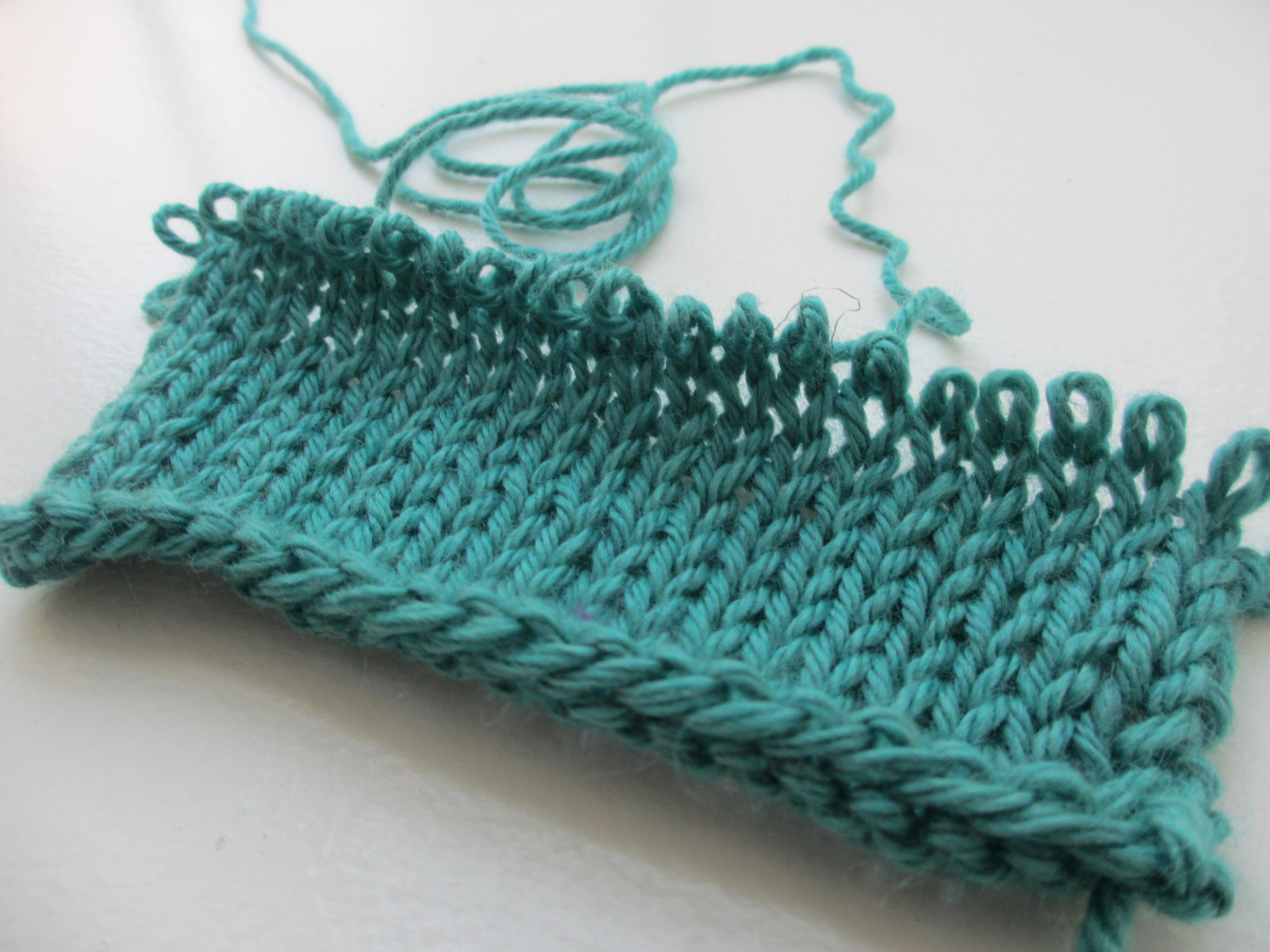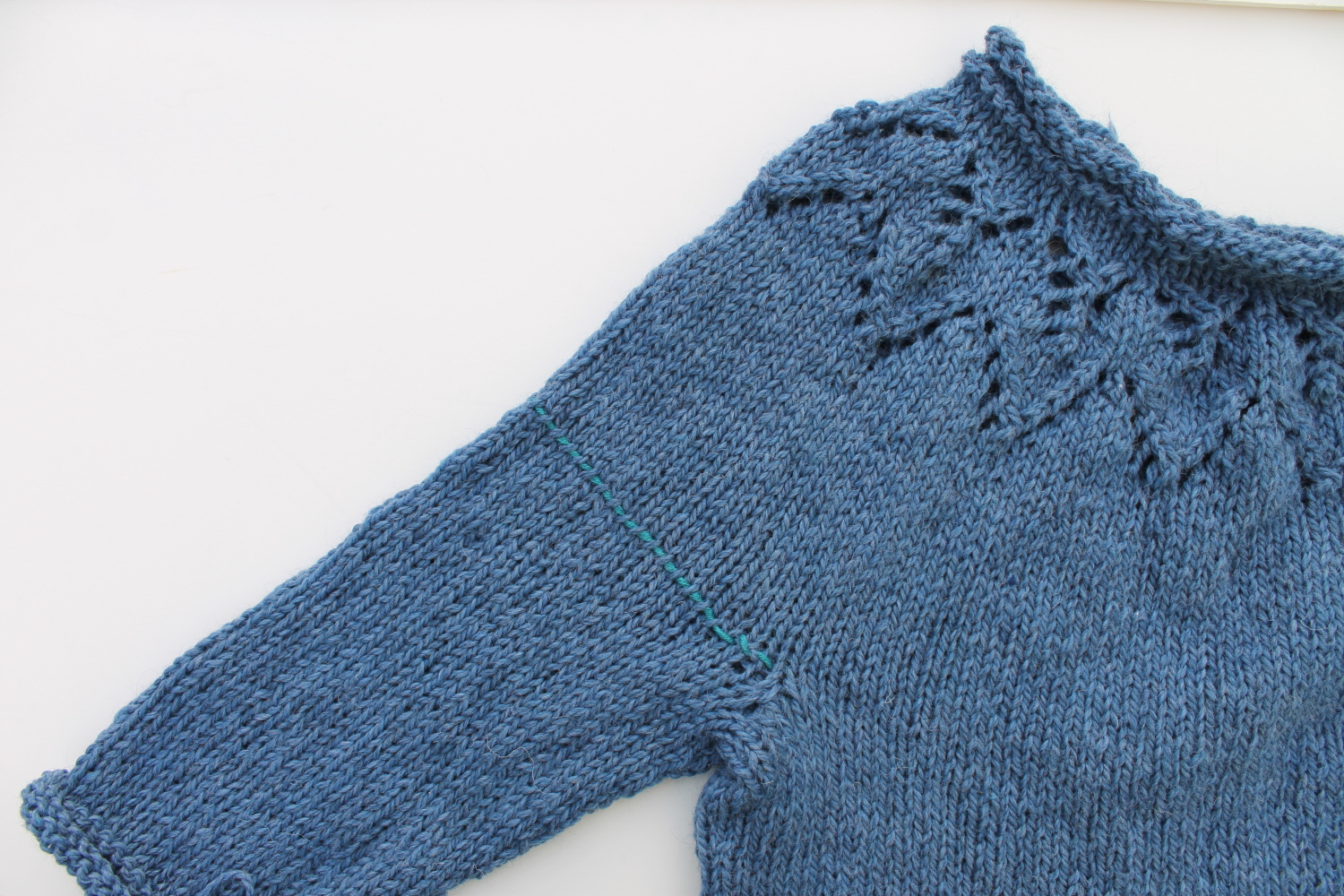Frogging knitting hurts my heart. I put in all that hard work only to watch it disappear with a gentle tug of the yarn. And, yes, I have shed many tears over a couple of particularly frustrating projects.

Get tips for safely frogging those precious knitting stitches.
In case you’re wondering what in the world “frogging knitting” means, it’s simply ripping out your stitches when you’ve made a mistake. They say it gets its name from “rip it, rip it” (like “ribbit, ribbit” — get it?). It happens to the best of us: the late-night knitters, the knitters who talk too much at stitch group, the knitters who try to watch TV while stitching.
If there’s one thing I’ve learned about frogging knitting, it’s to have a plan before you do anything irrational. So before you kick, scream and cry, take a few breaths and use this guide to make a plan for frogging knitting.
1. Determine if you must frog or can keep going.
Ask yourself: Is this a mistake I can let go? If it is, move on. Sometimes little mistakes, like a missed yarn over or decrease, can be ignored, as long as you get the correct stitch count back. No one will ever notice except you. (Maybe this Perfectionist’s Guide to Knitting will help you stop judging your work so harshly.)
If you really messed up — maybe there is a big hole or your stitch count is way off — then it’s probably best to proceed with ripping back.
2. Assess the mistake.
It’s natural to get angry and irrationally begin frogging your work without a plan. But this won’t help! Before you start ripping, take a few breaths and assess where exactly you made the mistake. Make a note on the pattern and mark the mistake with a stitch marker. Do whatever you need to do to make sure you’re clear on where you messed up.
3. Pause and contemplate.
When you make a mistake, the worst action you can take is to get frustrated and crazy. I once became so angry that I frogged an entire sweater just because my stitch count was off. I started over and had the same problem again. It turned out that there was an error in the pattern, not my knitting!
Sometimes it helps to put the project out of sight and walk away from it. I find this especially true when I’ve been knitting late at night. Occasionally, sleep is all you need for some knitting clarity!
If you can’t seem to make a decision, let it be for an hour — or even overnight. Then, pick up where you left off later when you’re in better shape to make decisions.

4. Plan your attack.
There are many different ways to deal with frogging, but you’ll need to choose the one that’s right for you.
You may want to rip out your work completely and start from the beginning if you can’t identify where the mistake is. You could also rip and start over if you messed up close to the beginning of the project and won’t lose much time.
If frogging the entire project brings tears to your eyes, another option is an afterthought lifeline. The afterthought lifeline is the ideal solution when you know where you messed up. This is a lifeline of yarn that you create just a few rows before the mistake. The lifeline holds all the stitches in place so that you can rip without frogging back too far. (You can read more on afterthought lifelines here.)
Stuck in a real pickle? There are plenty of ways you can fix your knitting without ripping, and Ann Budd is ready to help you out in her class Save Our Stitches: Fixing Knitting Mistakes. Some of Ann’s fixes don’t require ripping at all!
How do you safely frog your knitting to fix mistakes? Have you ever cried over a knitting project gone wrong?

Share tips, start a discussion or ask one of our experts or other students a question.
No Responses to “Frogging Your Knitting: Making a Plan to Safely "Rip It, Rip It"”